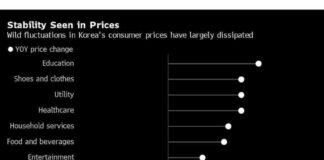Creating a Regulated Market-Based Mechanism for UPI MDR: Sharath Bulusu
Google Pay has emerged as a dominant player in the digital payment landscape, capturing 37 per cent of all UPI transactions in the country last month. While the convenience of digital transactions like UPI is undeniable for customers, there is a cost associated with processing these transactions for fintech firms and banks. Sharath Bulusu, Director of Product Management at Google Pay, sheds light on the importance of implementing a merchant discount rate (MDR) for UPI, the company’s emphasis on Indian languages, and their innovative credit strategy.
The Need for a Regulated Market-Based Mechanism for UPI MDR
In his interview with Ajinkya Kawale, Bulusu articulates the rationale behind the necessity for a regulated market-based mechanism for UPI MDR. He emphasizes that while UPI transactions are typically free for users, there are operational costs that fintech firms and banks incur in facilitating these transactions. Implementing a structured MDR system ensures that these entities are adequately compensated for their services, thereby sustaining the growth and stability of the digital payment ecosystem.
Bulusu highlights the importance of striking a balance between providing seamless digital payment solutions to consumers and ensuring the financial viability of the intermediaries involved in the transaction process. By creating a regulated market-based mechanism for UPI MDR, the industry can foster a sustainable environment where all stakeholders are incentivized to continue innovating and expanding the digital payment infrastructure.
Google Pay’s Focus on Indian Languages
In addition to discussing the MDR framework for UPI, Bulusu delves into Google Pay’s commitment to catering to the diverse linguistic landscape of India. He acknowledges the significance of offering a user-friendly interface in multiple Indian languages to enhance accessibility and inclusivity for all segments of the population. By prioritizing language localization, Google Pay aims to bridge the digital divide and empower users from varying linguistic backgrounds to embrace digital payments with ease.
Bulusu underscores the role of technology in breaking down language barriers and fostering financial inclusion. Through innovative features such as voice-based commands and vernacular language support, Google Pay strives to make digital transactions more intuitive and seamless for users across the country. By embracing linguistic diversity, the platform seeks to democratize access to digital payments and promote financial literacy among all demographic groups.
The Impact of Budget Allocations on Fintechs and Banks
Amidst the evolving landscape of digital payments, the recent Budget allocations have raised concerns regarding the incentivization of fintech firms and banks to facilitate free UPI transactions. Bulusu notes that the funds allocated for promoting free UPI transactions have seen a significant decline of 42 per cent, signaling a potential shift in the government’s approach towards digital payment initiatives. This reduction in financial support raises questions about the sustainability of the current model and the implications for the long-term viability of UPI transactions.
As the digital payment ecosystem continues to evolve, stakeholders must adapt to changing regulatory frameworks and market dynamics to ensure the seamless operation of UPI transactions. Bulusu emphasizes the need for collaboration between industry players, regulatory bodies, and policymakers to create a conducive environment for innovation and growth in the digital payment space. By fostering open dialogue and collaboration, the industry can navigate challenges effectively and drive meaningful progress towards a cashless economy.
Enhancing User Experience through Innovative Credit Strategy
In line with their commitment to innovation, Google Pay has introduced an innovative credit strategy to enhance the user experience and drive engagement on the platform. Bulusu elaborates on the unique features of their credit offering, which aims to provide users with convenient access to credit facilities while promoting responsible financial behavior. By leveraging advanced algorithms and data analytics, Google Pay can tailor credit solutions to meet the diverse needs of its users and empower them to manage their finances effectively.
Bulusu underscores the importance of responsible lending practices and transparency in the credit industry to build trust with users and foster long-term relationships. Through their credit strategy, Google Pay seeks to empower users to make informed financial decisions and access credit services that align with their goals and preferences. By leveraging technology and data-driven insights, the platform can offer personalized credit solutions that cater to the evolving needs of users in the digital age.
Driving Innovation and Inclusion in Digital Payments
As the digital payment landscape continues to evolve, stakeholders must prioritize innovation and inclusion to drive sustainable growth and empower users across the socioeconomic spectrum. Bulusu’s insights shed light on the critical role of regulated market-based mechanisms, linguistic diversity, and innovative credit strategies in shaping the future of digital payments in India. By fostering collaboration and dialogue among industry players, policymakers, and regulators, the industry can navigate challenges effectively and unlock new opportunities for financial inclusion and economic empowerment.
In conclusion, Sharath Bulusu’s vision for creating a regulated market-based mechanism for UPI MDR, Google Pay’s focus on Indian languages, and their innovative credit strategy underscore the platform’s commitment to driving innovation and inclusion in the digital payment space. By prioritizing user experience, responsible lending practices, and collaborative partnerships, Google Pay aims to redefine the digital payment landscape and pave the way for a more inclusive and accessible financial ecosystem for all.






















